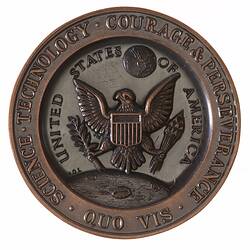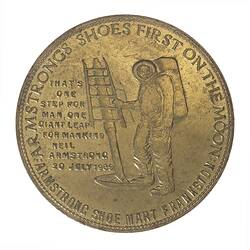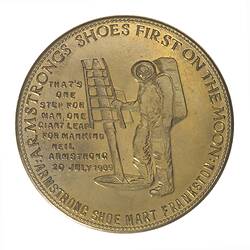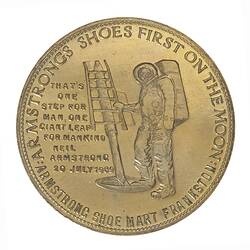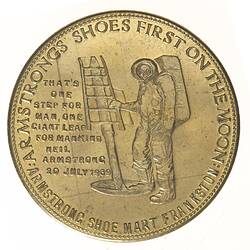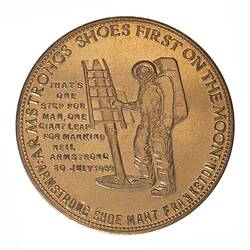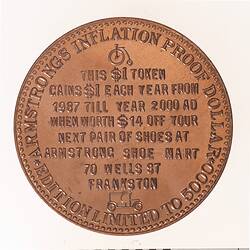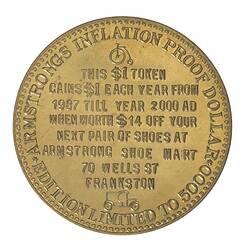Neil Armstrong, the first person to walk on the moon, was born on 5 August 1930 in Wapakoneta, Ohio. He received a Bachelor of Science degree in aeronautical engineering from Purdue University and a Master of Science degree in Aerospace engineering from University of Southern California. He holds honorary doctorates from several universities.
From 1949 to 1952, Armstrong served as a naval aviator, flying 78 combat missions during the Korean War. After the war Armstrong joined NACA (National Advisory Committee for aeronautics), NASA's predecessor, as a research pilot at the Lewis Laboratory in Cleveland. He later transferred to the NACA High Speed Flight Station at Edwards AFB, California. He flew many pioneering high speed aircraft, including the 4,000 mph X-15.
In 1962 Armstrong became an astronaut. He served as command pilot for the Gemini 8 mission, launched 16 March 1966, and was the first pilot to dock two vehicles in space. In 1969 he was commander of Apollo 11, the first piloted lunar landing mission. During this mission he became the first person to set foot on the moon.
Armstrong did not join another lunar mission. He held the position of Deputy Association Administrator for aeronautics, NASA Headquarters Office of Advanced Research and Technology, from 1970 to 1971. He resigned from NASA in 1971. During 1971-79, Armstrong was professor of aerospace engineering at the University of Cincinnati, where he was involved in both teaching and research. He currently serves as Chairman, AIL Systems, cnc. Deer Park, N.Y. He has shunned publicity, although is honoured in the Neil Armstrong Air and Space Museum (part of the Ohio Historical Society) at his birthplace of Wapakoneta, Ohio.
References:
NASA website http://www.jsc.nasa.gov/Bios/htmlbios/armstrong-na.html
More Information
-
Keywords
-
Localities
-
Authors
-
Article types

